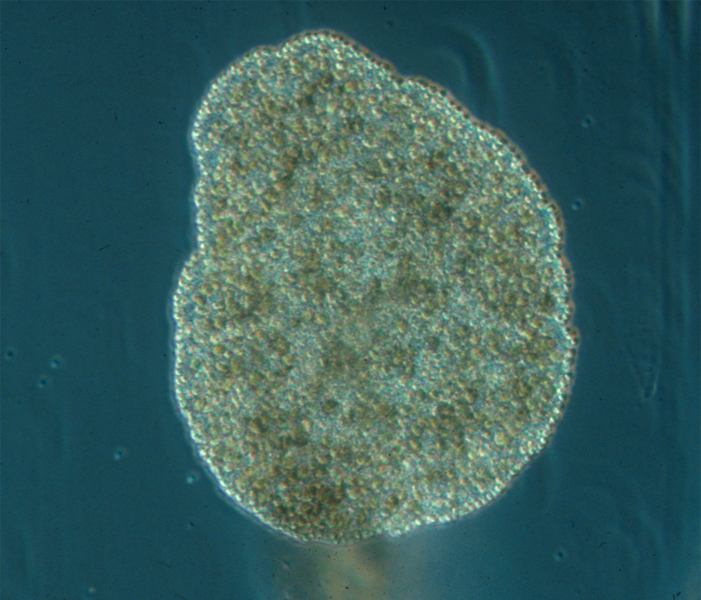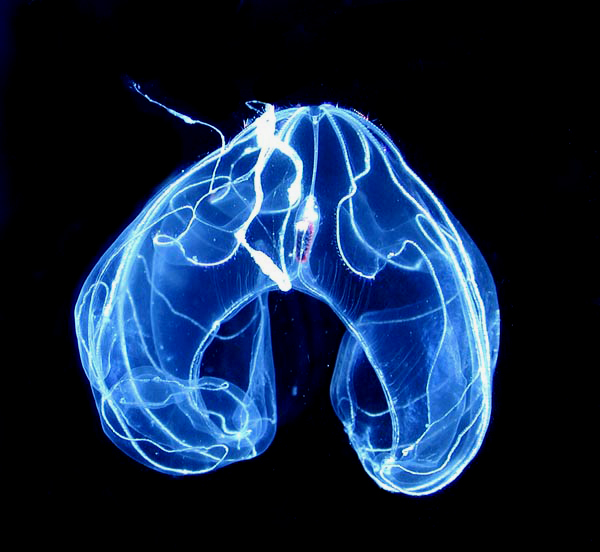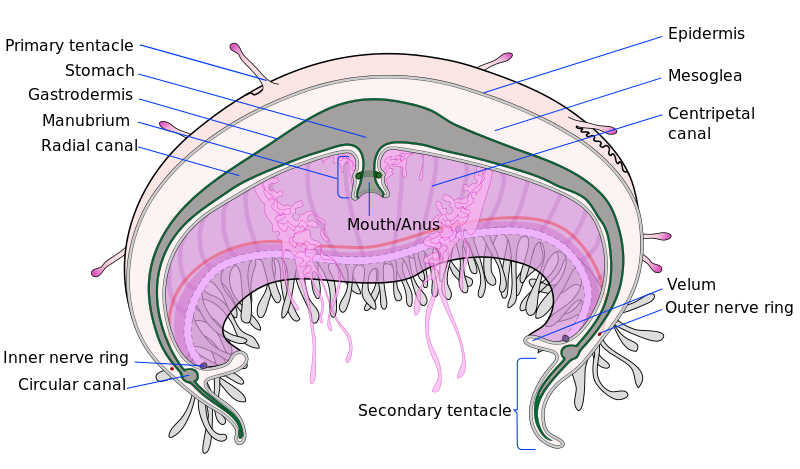by Piter Kehoma Boll
Comb jellies, which make up the phylum Ctenophora, are some of the most intriguing animals. Although they may look like jellyfishes at first, both groups are not closely related, as jellyfishes are cnidarians. One of the reasons why comb jellies are less popular may be simply because they are way less diverse than cnidarians. There is only about one ctenophore species for every 100 cnidarian species.
As a result, after 318 Friday Fellows, no comb jelly has been presented here yet, but this changes today. Let’s talk about Mnemiopsis leidyi, the warty comb jelly or sea walnut. Let’s stick with the second name because it sounds nicer.

The sea walnut is native from the western Atlantic Ocean, i.e., near the coast of the Americas. With an oval-shaped, transparent and lobed body, it measures up to 12 cm in length and 2.5 cm in diameter. Like most comb jellies, the sea walnut is able to emit light by chemical reactions when stimulated in the dark. However, this is not as often observed, although most people may think they are constantly producing colorful lights forming rainbow-like rows. However, this is caused by a refracted light and not actual bioluminescence and, as a result, can only be observed when an external light source reaches the animal.
The sea walnut is carnivore and feeds on a variety of organisms, mostly from the zooplankton, such as crustaceans, eggs and larvae of fish and even other comb jellies. Its predators include fish, birds, jellyfish and larger comb jellies.

One interesting phenomenon in the sea walnut is its defecation. It has a sack-like gut that most of the time has only the mouth as its opening. However, when its gut is filled with feces, part of it kind of balloons out until touching the epidermis and fuses with it, forming a temporary anus through which feces are expelled. The process is reverted and the anus disappears soon after. But there is one more peculiar thing about this story. Defecation occurs at regular intervals, about once every hour in the adults and once every 10 minutes in the larvae. Can you imagine that? Having to make and unmake your anus every hour? Or every ten minutes?
Despite its bioluminescence and iridescent colors, the sea walnut has a dark side as well. As I said above, this species is native to the Western Atlantic, where it lives just fine with other sea creatures. In the 1980s, however, it was accidentally introduced in the Black Sea, probably through ballast water from merchant ships. First observed in 1982, the species reached a density of up to 400 specimens per m³ in 1989. Its presence caused a dramatic drop in the populations of an anchovy species, Engraulis encrasicholus, a commercially important fish in this region. To control its population, another comb jelly was deliberately introduced in the Black Sea, Beroe ovata, which is a natural predator of the sea walnut. Fortunately, both species seem to have reached a stable predator-prey dynamic, otherwise the situation could have become even worse.
But humans never get tired of finding new ways to ruin ecosystems, right? Russia developed a network of channels running across the country’s rivers that connect several saltwater bodies for navigation, including the Black Sea, the Caspian Sea, the Baltic Sea, and the White Sea. As a result, the sea walnut was able to spread from the Black Sea into the Caspian Sea in 1999. There, it started to feed on the eggs and larvae of small fish and led to a reduction in the population of larger fish and seals.
During the 21st century, the sea walnut continued to spread across European seas, colonizing the Mediterranean, the Baltic and the North Seas. Its impact on these areas is still unknown, but it could be catastrophic, especially in the Baltic Sea, which is one of the most impacted marine environments in Europe.
– – –
– – –
References:
Schnitzler, C. E., Pang, K., Powers, M. L., Reitzel, A. M., Ryan, J. F., Simmons, D., … & Baxevanis, A. D. (2012). Genomic organization, evolution, and expression of photoprotein and opsin genes in Mnemiopsis leidyi: a new view of ctenophore photocytes. BMC biology, 10(1), 1-26. https://doi.org/10.1186/1741-7007-10-107
Shiganova, T. A., Sommer, U., Javidpour, J., Molinero, J. C., Malej, A., Kazmin, A. S., … & Delpy, F. (2019). Patterns of invasive ctenophore Mnemiopsis leidyi distribution and variability in different recipient environments of the Eurasian seas: A review. Marine environmental research, 152, 104791. https://doi.org/10.1016/j.marenvres.2019.104791
Wikipedia. Mnemiopsis. Available at < https://en.wikipedia.org/wiki/Mnemiopsis >. Access on 06 January 2022.
– – –
* This work is licensed under a Creative Commons Attribution-ShareAlike 3.0 Unported License.
This work is licensed under a Creative Commons Attribution-ShareAlike 3.0 Unported License.
** This work is licensed under a Creative Commons Attribution-NonCommercial 4.0 International License.
This work is licensed under a Creative Commons Attribution-NonCommercial 4.0 International License.






